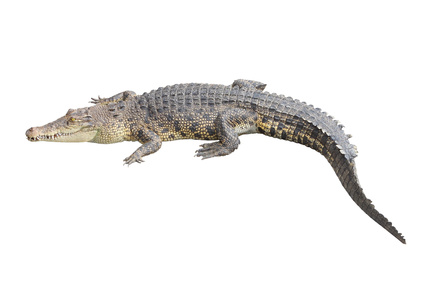Alligators have been harvested for some two hundred years. Alligators were first harvested in Louisiana in great numbers in the early 1800's. These alligators were harvested for their skins which were used to make boots, shoes and saddles, and for their oil used to grease steam engines and cotton mills. The demand decreased when the leather made from the skins was thought not to be durable. In the mid 1800's the demand for alligator skins increased again. These skins were used to make shoes and saddles for the Confederate troops during the Civil War.

The Rise Of Commercial Alligator Skin Tanning
In the late 1800's and early 1900's, commercial tanning processes began in New York, New Jersey and Europe. Because this process made the alligator skins soft, durable and more pliable, the demand for alligator leather increased dramatically. By the mid 1900's Louisiana’s alligator population had been significantly reduced. In 1962 the alligator hunting season was closed statewide due to low numbers. The reduction in numbers was a result of non-regulated harvests. Detrimental harvest practices included overharvesting (today harvest quotas are set annually for each property currently hunted), non-selection of sexes which often resulted in overharvesting females (males currently comprise approximately 70% of adult alligators harvested) and no closed season, allowing hunting to coincide with nesting, which resulted in the harvest of future populations by harvesting females before they could release hatchlings from the nest or even begin nesting (current seasons are conducted in September after nesting). In 1967, the alligator was put on the endangered species list. By 1971, when the Crocodile Specialist Group began, all 23 species of crocodilian were endangered or threatened.
Alligator Farming Efforts Increase Alligator Population
In an effort to restore the animal and the industry, researchers at Rockefeller Refuge in Louisiana developed a revolutionary program of alligator farming/ranching that removes eggs from the wild, incubates and hatches them, and then, two years later, returns between 14% and 17% of those hatchlings to the wild. Upon return, they are between three and six feet in length, healthy, and capable of defending themselves in the marsh. As a result, the percentage of returns (i.e. 14%) is greater than the survival rate for eggs left in the marsh. In 1972 the alligator season was opened only in Cameron Parish and lasted 13 days. Other parishes were gradually added until the season became statewide in 1981. Louisiana’s wild and farm alligator harvests currently exceed 300,000 animals annually, while the population level (based on aerial nest surveys) remains stable.
Due to the success of this "conservation through utilization" program, the alligator was removed from the endangered species list in 1987. This program also set an example that inspired similar sweeping changes in the crocodile locales across the globe. So much so that by 1996, one-third of all crocodile species were sufficiently abundant to support well-regulated annual harvests and one-third of the species were no longer in danger of extinction but are not harvested. No other group of vertebrate animals has undergone such a dramatic improvement in its conservation status.
Source: IUCN-SSC Crocodile Specialist Group (CSG)
Source: Convention on International Trade in Endangered Species of Wild Fauna and Flora (CITES)
Source: Louisiana Department of Wildlife and Fisheries



